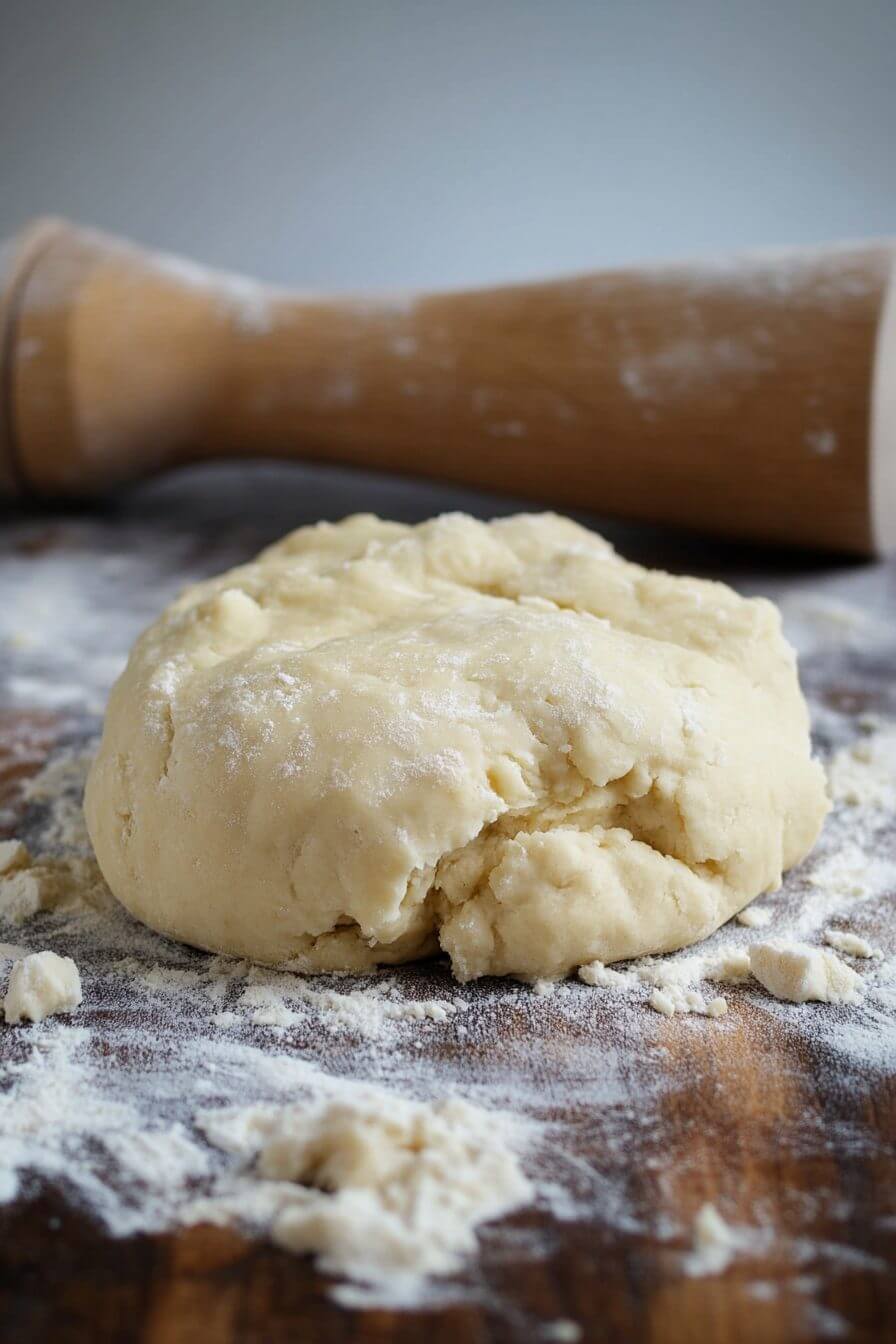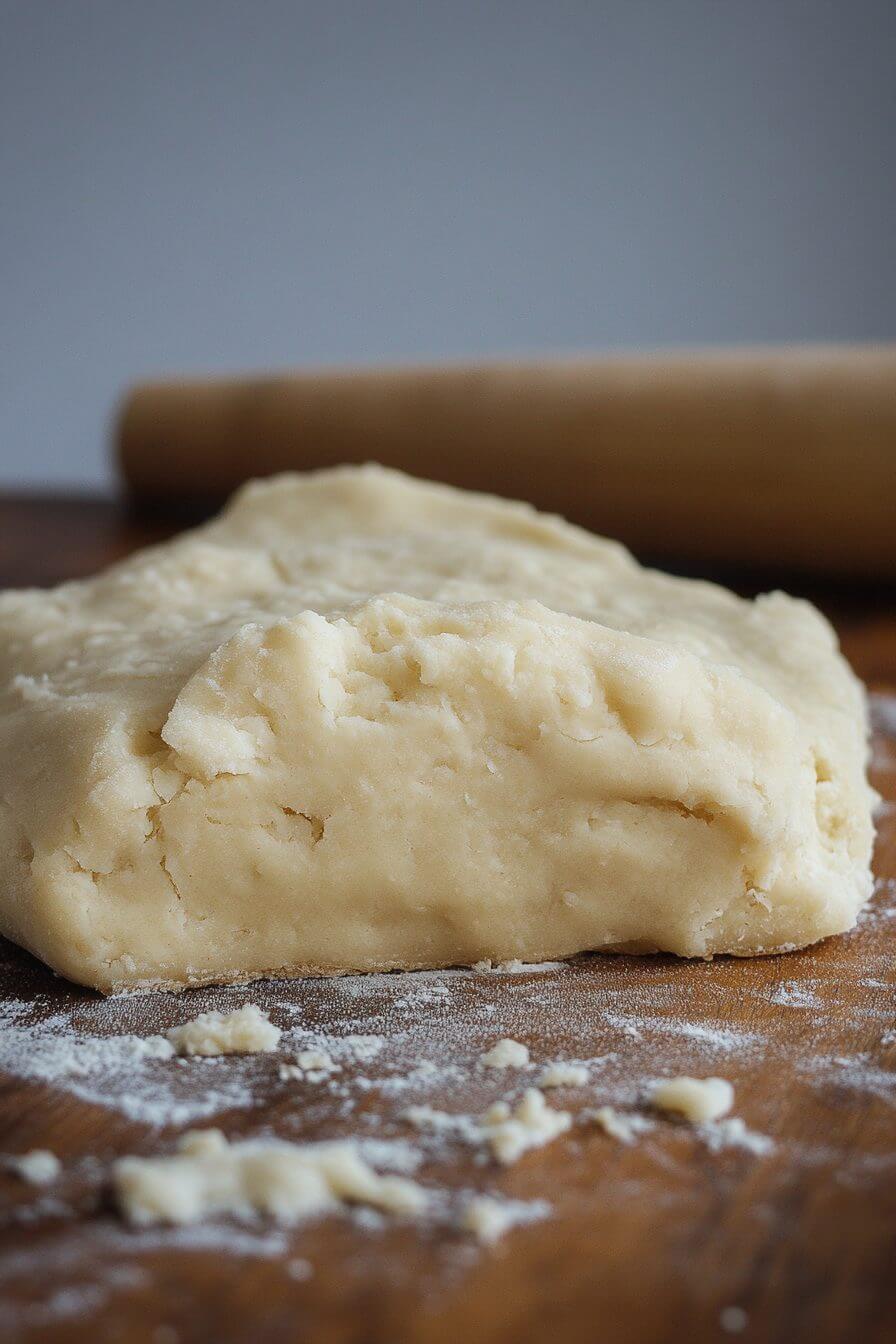Save This Recipe
You know that moment when you realize you’ve promised dessert, but your freezer’s barren and your last-minute grocery run feels more like a sprint than a stroll? I’ve been there—standing in my kitchen at 5:30 p.m., blinking at an empty mixing bowl and cursing the pie dough that never made it to the fridge.
For ages, I convinced myself that a golden, flaky crust needed endless chilling, perfect butter-to-flour ratios and a fancy rolling pin. It became more of a chore than a treat—until I discovered a no-fuss, press-in pie crust. No rolling. No chilling. No tears. Seriously, it’s almost too easy and somehow still turns out tender and flaky.
Why You’ll Love It
Let me explain why this crust might just turn you into a convert. First, the prep time is practically nonexistent—you mix, you press, you bake. That’s a lifesaver when you’re juggling work calls, kids’ homework and a craving for something sweet or savory. You know what’s great? You don’t need a pastry cutter, food processor or that ancient rolling pin you inherited. A bowl, a spoon (or your hands) and a pie plate are enough.
Here’s the kicker: a pinch of baking powder gives it a subtle lift, so you get air pockets that read as “light and flaky” rather than a dense hockey puck. Want a dessert pie bursting with summer berries? Or a cozy spinach-and-cheddar quiche? This crust adapts. It’s like culinary duct tape—fixes everything, and fast.
Timing and Servings
From start to finish, plan on about 30 minutes. That includes mixing the dough, pressing it in and letting your filling bake. It makes one 9-inch crust, which typically serves four to eight people—depending on how generous you’re feeling or how thin you slice.
Ingredients
- 2 cups all-purpose flour
- ½ teaspoon salt
- ¼ teaspoon baking powder
- ½ cup neutral oil (vegetable, canola or light olive oil)
- 3 tablespoons cold water
Directions
- Lightly grease a 9-inch pie pan with nonstick spray or a thin smear of oil.
- In a large bowl, whisk together the flour, salt and baking powder to distribute everything evenly.
- Pour in ½ cup of oil. Stir until the mix looks like coarse sand—small clumps are fine; they bake into delicious flaky pockets.
- Dribble in 3 tablespoons cold water, mixing gently. If the dough still feels crumbly, add another teaspoon of water at a time. You want a cohesive ball, not sticky glue.
- Transfer the dough to your pie pan. Use your fingertips to press it evenly across the bottom, then up the sides. Rotate the pan as you go, smoothing the walls. No rolling pin required.
- Crimp the edge by pinching the dough between thumb and forefinger, or press lightly with a fork for a simple ridge.
- Fill and bake according to your chosen filling:
- Fruit pies: 375 °F for 45–55 minutes. Tent the edge with foil if it browns too fast.
- Quiches: 350 °F for 30–35 minutes, until the custard sets.
Variations
- Herbed savory: Whisk 1 teaspoon dried rosemary, thyme or Italian seasoning into the dry mix for tarts and quiches.
- Cinnamon-sugar sweet: Stir 1 tablespoon sugar and ½ teaspoon cinnamon into the flour—perfect for apple or pumpkin pies.
- Nutty crunch: Fold in ¼ cup finely chopped pecans or almonds before pressing the dough.
- Whole wheat swap: Replace half the flour with whole wheat for an earthier bite. It’ll be heartier but still tender.
Storage & Reheating Tips
- Make-ahead dough: Wrap the unpressed dough in plastic and refrigerate for up to 48 hours. Let it rest at room temperature for about 10 minutes before pressing.
- Freeze pressed crust: Tightly cover the pan with plastic wrap and foil; freeze up to 3 months. Thaw 30 minutes before filling and baking.
- Leftover slices: Warm a slice in a 300 °F oven for 8–10 minutes to refresh that crisp edge. A quick zap in the microwave works if you’re in a real rush, but you’ll lose some flakiness.
FAQs
Q: Can I use butter instead of oil?
A: You could, but you’d lose the “no-roll” perk. Butter needs chilling and cutting in. If you have extra time, chill cubed butter and pulse in a food processor with the flour, then add water and press.
Q: Is blind-baking required?
A: For custard or cream pies, yes—pre-bake the crust at 350 °F for 10–12 minutes, then let it cool before adding filling. Fruit pies usually bake long enough that the crust cooks through without a blind bake.
Q: Can I make this gluten-free?
A: Absolutely. Swap a 1:1 gluten-free flour blend. The texture will be slightly more crumbly, so handle it gently and consider adding an extra tablespoon of water.
Q: Why baking powder?
A: It’s the secret weapon for lift and tenderness. Instead of relying solely on cold fat, this little booster gives a delicate puff and helps prevent a heavy, compact crust.
Conclusion
There you go—a no-fail, fuss-free pie crust that fits right into busy weeknights or last-minute dinner parties. Whether you’re chasing fresh summer berries or planning a cozy autumn gathering, this easy-press dough banishes pastry panic. Grab that empty pie dish, press in the dough, fill it up and bake. The result? A golden, flaky crust that tastes like you spent hours in the kitchen, even when you barely set down your phone.

No Fuss Pie Crust
Ingredients
- 2 cups all-purpose flour
- 1/2 cup oil vegetable, canola, or olive oil
- 3 tablespoons cold water
- 1/4 teaspoon baking powder
- 1/2 teaspoon salt
Instructions
- Lightly grease a 9-inch pie dish with nonstick spray to prevent sticking. Set the dish aside.
- In a large mixing bowl, whisk together 2 cups of all-purpose flour, 1/2 teaspoon of salt, and 1/4 teaspoon of baking powder. This ensures even distribution of ingredients.
- Add 1/2 cup of oil and 3 tablespoons of cold water to the flour mixture. Stir gently to combine, forming a dough that is easy to work with.
- Mix until the ingredients form a cohesive dough. Shape into a ball that holds together when gently squeezed.
- Press the dough ball into the prepared pie dish, spreading it evenly along the bottom and up the sides. Crimp the edges as desired.
- Add your chosen filling to the crust and follow the baking instructions for your specific filling recipe, as times and temperatures vary.


1 comment
I find your recipes very easy to follow and I need easy and simple in my golden years. Thank You !!!